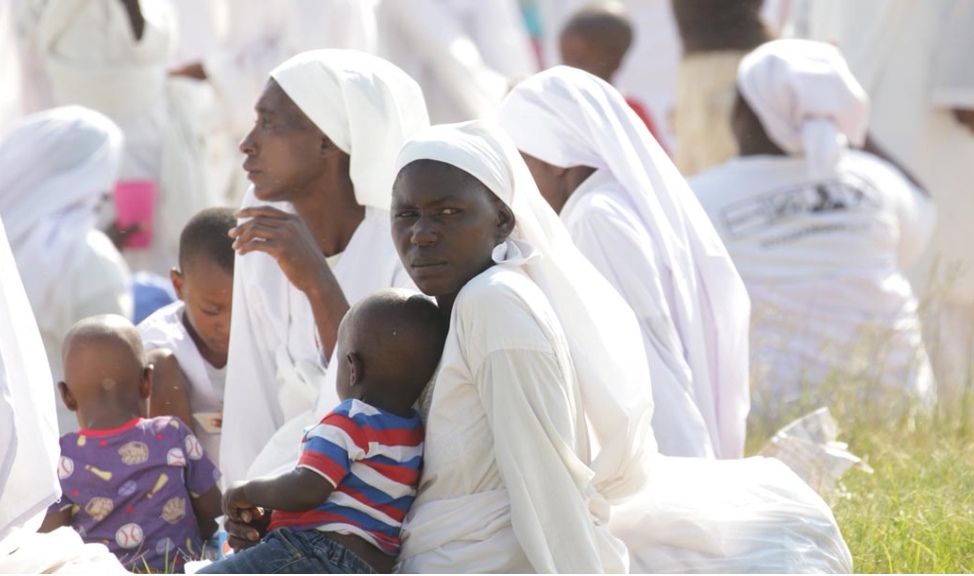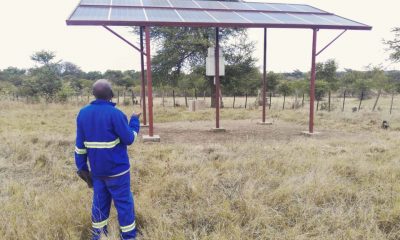BY ELIA NTALI
When the first consignment of COVID-19 vaccines arrived in Zimbabwe in early 2021, rumours and misconceptions around their development swirled. Vaccine hesitancy rates rose dangerously.
The government activated awareness campaigns on all media platforms to encourage citizens to get inoculated against the pandemic virus.
But particularly in Zimbabwe’s Apostolic religious community, uptake promised to be slow.
Some 37% of Zimbabweans belong to the Apostolic church, a Christian sect that traditionally shies away from allopathic medical intervention, owing to a belief that illness has a spiritual dimension, and that healing is a function of faith. Amid an outbreak of infectious disease, that’s a dangerous position to preach.
“Personally, I had fears, because growing up, we were of the belief that taking vaccines was getting the biblical mark of the beast. I am happy that our church leaders who had not been tolerating immunisation are now encouraging us to take our children to clinics.”
Rumbidzai Shayanewako, 32, mother of fourEnter the Apostolic Women Empowerment Trust (AWET), partnered with UNICEF, who have conducted awareness campaigns that have created demand for the uptake of COVID-19 vaccines and child immunisation.
AWET’s head of programmes, Hope Dunira, says the organisation engaged members of the apostolic communities through training that was centred on traditional and church leaders.
“We embarked on a training programme that targeted traditional and religious leaders. The training was to educate the leaders to encourage their church members from different churches to access health services such as routine immunisation and the COVID-19 vaccine. This workshop assisted in getting buy-in and support from vital church leaders at national level.
AWET trained 52 District Focal Persons (DFPs) on all issues of COVID-19, in order for them to train behaviour-change facilitators on vaccine uptake, impacts of COVID-19, where to access vaccines, and how to prevent it. The DFPs were also responsible for collecting crucial community feedback and acting upon it. This helped build trust between AWET and the apostolic communities. The DFPs linked apostolic members to the local clinics so that arrangements are done to vaccinate members in confidence.
“We also trained more than 2,000 Behaviour Change Facilitators (BCFs) from the Apostolic communities responsible for awareness-raising campaigns on COVID-19, and promoting the uptake of essential services – inclusive of vaccines – from 52 districts, and eight provinces in the country. These BCFs have leverage in penetrating the church as they are part of the church themselves. Hence, they do not face resistance,” said Dunira.
Rumbidzai Shayanewako, 32, a mother of four and a member of one of the ultraconservative apostolic churches, said she gained confidence after interventions from healthcare workers and non-governmental organisations.
“Members from Apostolic churches are attributing the lower death rate and the higher recovery rate to vaccination. Therefore the perception has positively changed for both child immunisation and COVID-19,”
Reverend Mathias Tsine, Federation of Indigenous Churches in Zimbabwe
“Personally, I had fears, because growing up, we were of the belief that taking vaccines was getting the biblical mark of the Beast. I am happy that our church leaders who had not been tolerating immunisation are now encouraging us to take our children to clinics. This was changed by the education we got from various awareness campaigns,” said Shayanewako.
Reverend Mathias Tsine from the Federation of Indigenous Churches in Zimbabwe (FICZ), an ecumenical board responsible for regulating the affairs of indigenous churches, believes perceptions have changed on both routine immunisation and Covid-19.
“The government COVID-19 vaccination roll-out failed to get buy-in from churches across the board, not only Apostolic churches. This was as a result of the programme being sabotaged with biblical references pointing at the mark of the Beast – this was a pulpit message. Furthermore, there was widespread rhetoric and propaganda that the programme was meant to eliminate the surging global population, but particularly Africans.
“It is quite pleasing that we managed to educate our religious constituency on the importance of adhering to the government call, and a lot responded willingly, given that the roll-out wasn’t compulsory. Previously vaccinations were associated with myopic views and speculations as was witnessed with COVID-19 – although the eventual results proved critics wrong. Members from Apostolic churches are attributing the lower death rate and the higher recovery rate to vaccination. Therefore the perception has positively changed for both child immunisation and COVID-19,” said Tsine.
He added: “Our outreach programs emphasised adherence and as such, the uptake has increased tremendously with some churches migrating from the traditional norms of not accepting medications for themselves and their children. It is through this understanding that churches are experiencing a reduction in mortality rate and congregants celebrated God’s hand upon the end of lockdowns after having lost a few to the pandemic as compared to other societies, owing to heeding the call to vaccination.”Gavi.org


 Slider3 years ago
Slider3 years ago
 National4 years ago
National4 years ago
 Tourism and Environment4 years ago
Tourism and Environment4 years ago
 Opinion4 years ago
Opinion4 years ago
 Special reports4 years ago
Special reports4 years ago
 National4 years ago
National4 years ago
 National3 years ago
National3 years ago
 National3 years ago
National3 years ago


